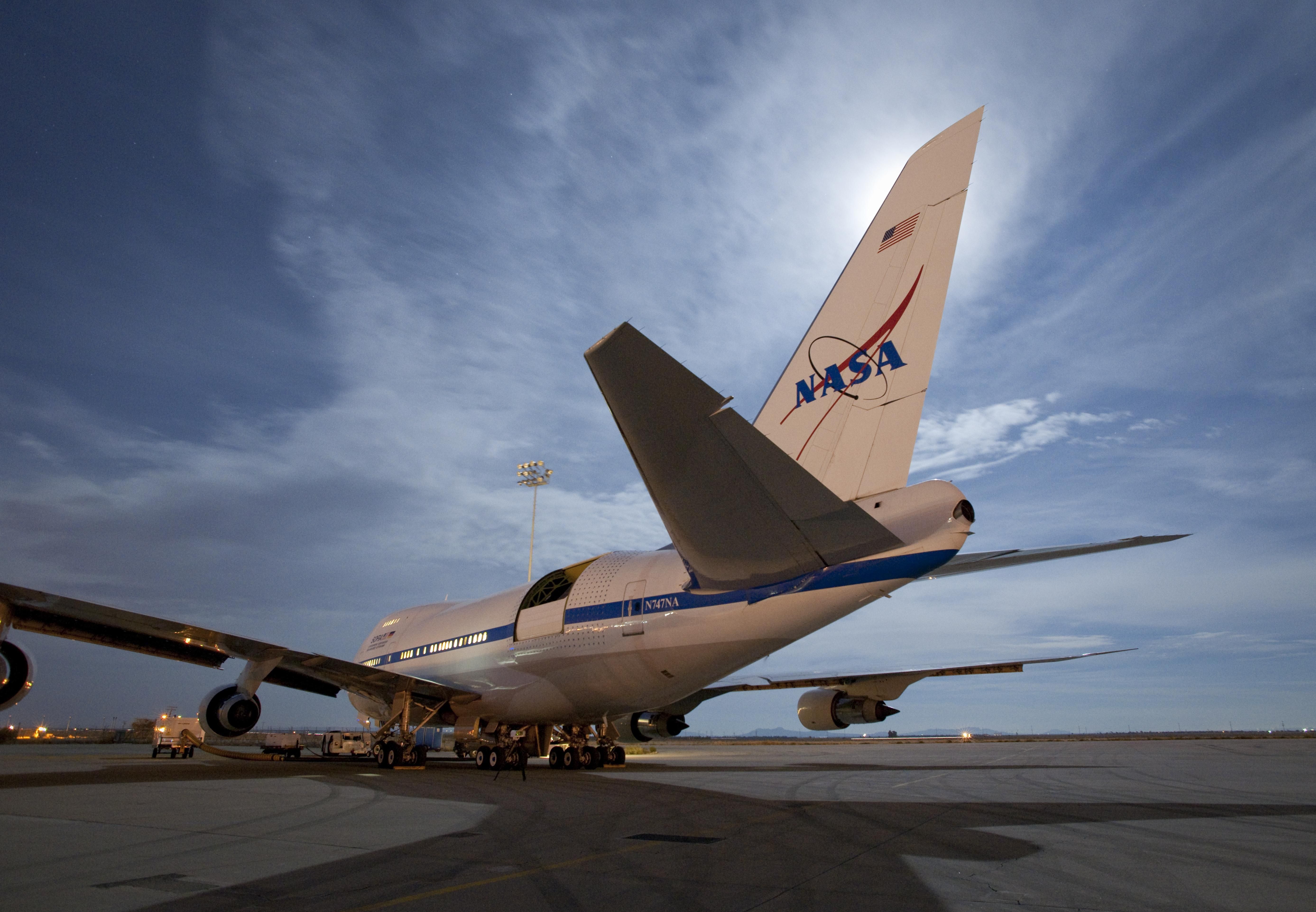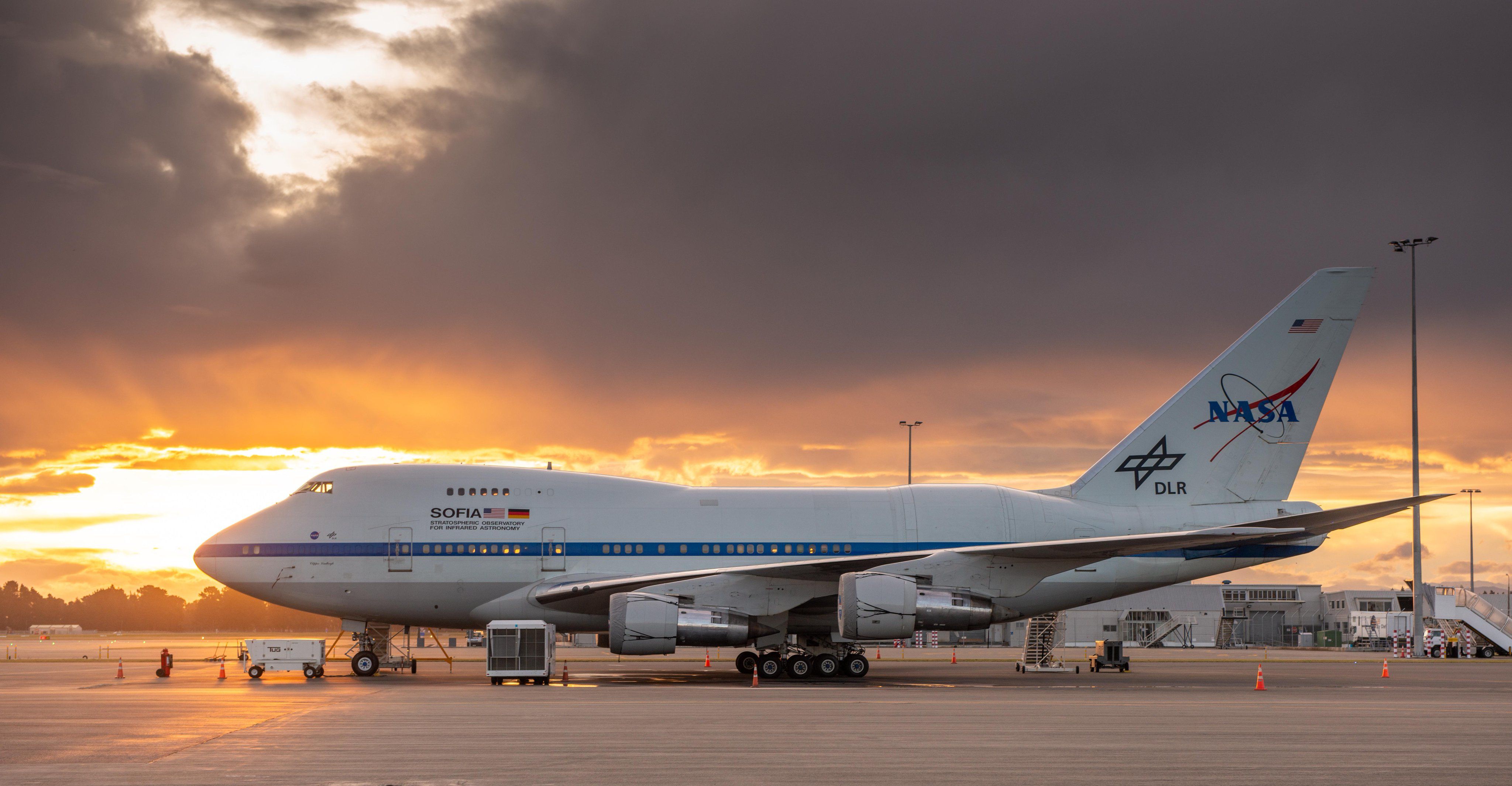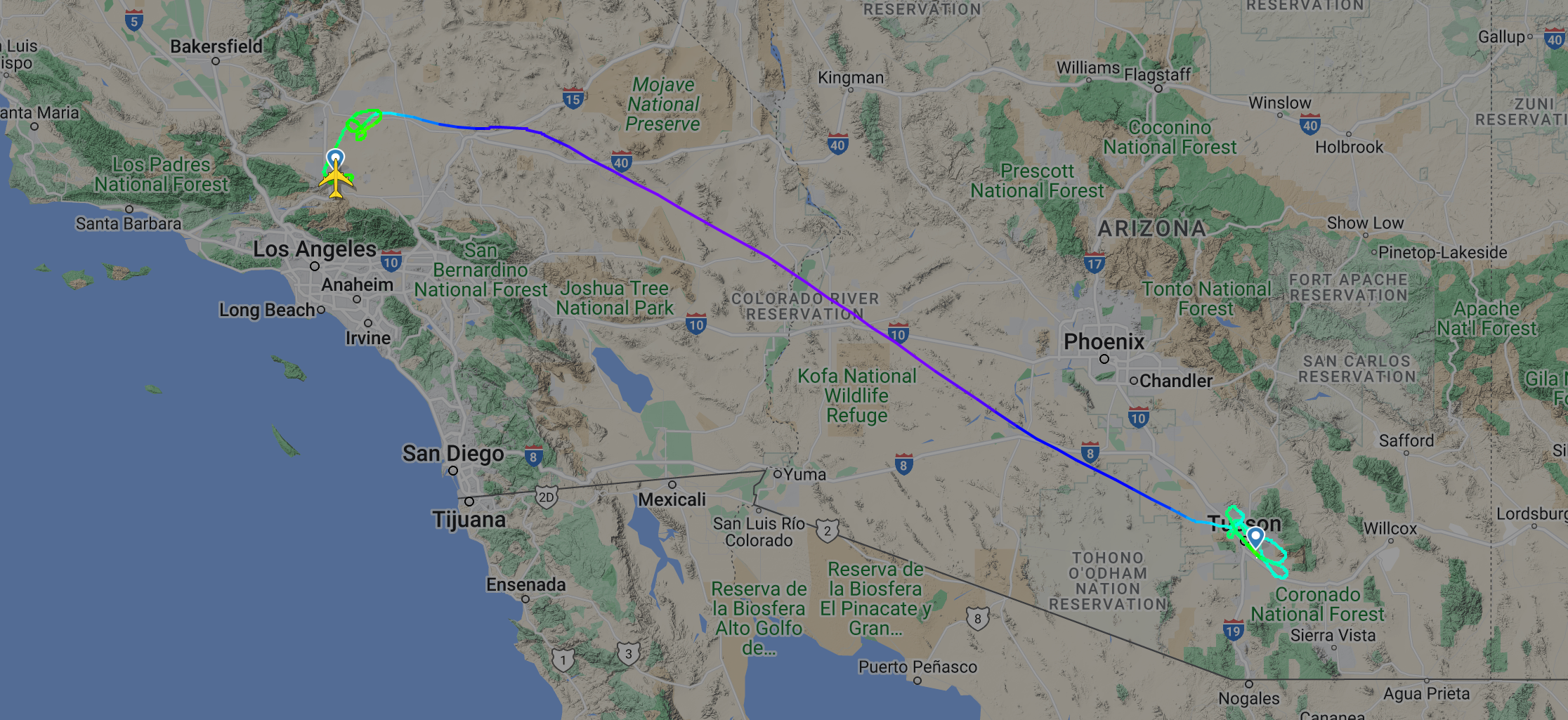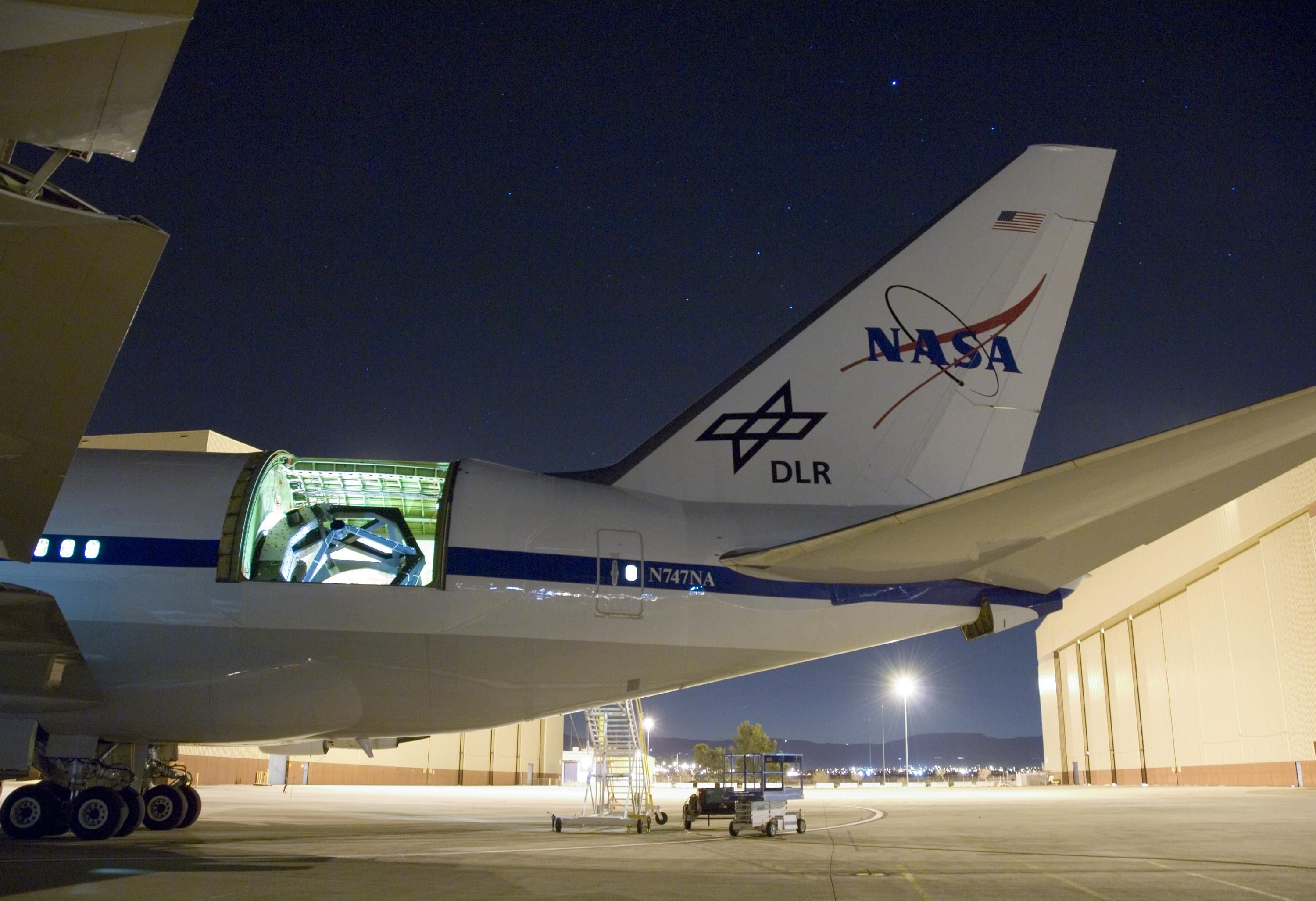The iconic NASA Boeing 747 carrying the world's largest flying observatory has completed its final flight. The Boeing 747SP, registration N747NA, is owned by NASA and was modified to carry a reflecting telescope for the Stratospheric Observatory for Infrared Astronomy (SOFIA), from whence it derives its nickname.
SOFIA took off for the last time from NASA's Armstrong Flight Research Center in Palmdale, California, to its new "forever home" at the Pima Air & Space Museum in Tucson, Arizona. The pilots departed at 8:31 this morning and performed one last flyby of the area, complete with a wing tilt, to acknowledge everyone in the community who has supported and worked on SOFIA.
The aircraft landed in Tucson at the Davis-Monthan Air Force Base this afternoon at 11:33 local time and will now undergo the final preparations to join the Pima Air & Space Museum. Dr. Naseem Rangwala, the SOFIA project scientist at NASA's Ames Research Center in California's Silicon Valley, highlighted some of the accomplishments of the portable telescope:
“The SOFIA mission may have ended, but the future is bright. SOFIA has made numerous and significant contributions to astrophysics and will continue to do so as our scientific community finds new and creative ways to analyze SOFIA data in the archive.”
What is next for SOFIA?
The jumbo jet will now undergo final preparations before it is towed to the museum to eventually be on display to the public at the Pima Air & Space Museum. The museum, one of the world's largest aerospace museums, is currently developing plans for how the SOFIA aircraft will eventually be on display to the public. Pima is also home to a dedicated restoration facility where it can preserve incoming aircraft like SOFIA for future generations.
The site includes six hangars, 80 acres of outdoor display grounds, and more than 425 aircraft from around the world. SOFIA will join a host of other notable NASA aircraft at Pima, including the first Super Guppy that transported Saturn V rocket parts for the Apollo missions. The museum is also home to the KC-135 "Weightless Wonder V," which simulated low-gravity conditions to conduct science experiments and train astronauts.
The exhibition will include additional mission artifacts that speak to the legacy of SOFIA and all its valuable contributions to research. Simple Flying took a look at six of SOFIA's most fascinating discoveries, including spotting water on the sunlit side of the Moon and showing how material comes together to form brand-new stars. The SOFIA leadership team at NASA expressed their thanks to everyone who helped contribute to making the mission such a success:
“We want to express our gratitude to everyone, both our U.S. and German colleagues, who, over the years, developed, tested, and operated the observatory at Ames and Armstrong. It has been an incredible team effort to create and operate the world’s largest airborne observatory."
"None of this would have been possible without the community of scientists who have used and supported SOFIA over the years. We look forward to hearing everything the SOFIA scientific community learns as we go on. It is with heartfelt thanks that we at NASA say goodbye to SOFIA. We are sad to see you go but so happy to have worked with the SOFIA team.”
 A lifetime of service.
A lifetime of service.
The Boeing 747SP initially served as a Pan Am passenger aircraft known as Clipper Lindbergh from 1977-1986. The aircraft then flew for United Airlines until NASA purchased it in 1997. At this point, the jetliner had to be modified to carry a giant 100-inch (2.5 meters) telescope weighing 38,000 pounds (17,000 kilograms). The telescope was provided by NASA's partner on the SOFIA mission, the German Space Agency at DLR.
The aircraft was also equipped with a large rolling door on the side to allow the telescope to observe the skies. The door became one of the largest open ports ever flown on an aircraft and the largest certified to fly at all altitudes and speeds with the door open. The telescope is so stable in-flight that it is equivalent to keeping a laser pointer steady on a penny from 10 miles away.
The unique setup allows SOFIA to fly above 99.9% of water in the atmosphere, which is crucial to its research into molecules. After achieving operational capability in 2014, SOFIA flew missions around the world to observe how stars form. It was responsible for making the first-ever detection of helium hydride, the first type of molecule believed to have ever originated in the universe. SOFIA also turned her telescope toward much nearer celestial bodies, including Venus, Pluto, comets, and the Moon.
SOFIA completed her last mission on Wednesday, September 28, at around 20:45 local time. The flight left Palmdale Airport and around the North Pacific Ocean for seven hours and 58 minutes before returning to be decommissioned.



